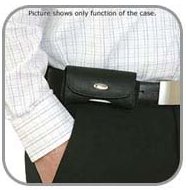 With what seems a month taken off for summer vacation (at least there was no list available), Swedish phone accessory maker Krusell has again provided us with their top 10 list of mobile phones for the last month. As you probably know by now, they are measuring this by looking at handset-specific accessory sales.
With what seems a month taken off for summer vacation (at least there was no list available), Swedish phone accessory maker Krusell has again provided us with their top 10 list of mobile phones for the last month. As you probably know by now, they are measuring this by looking at handset-specific accessory sales.
So here it is:
1.(2) Nokia 5800
2.(3) Nokia N97
3.(4) Nokia 6303 Classic
4.(5) Nokia 3109/3110 Evolve
5.(-) Nokia E51
6.(7) Nokia 6301/6300/6300i
7.(-) Samsung i8910 Omnia HD
8.(-) Nokia 6700
9.(8) Samsung B2100
10.(-) Nokia E71
() = Last month’s position.
This list is a bit of an odd one (and, yes, I know that I have voiced concerns about its accuracy before): how come the iPhone 3G shot in from nowhere to #2 in June and, by August has disappeared again completely? What happened to all the HTCs? Gone? Sudden shift in customer demand? Or were Krusell’s products for the respective models maybe just pulled from some stores? Or maybe it’s the looks? It’s odd, odd, odd…



